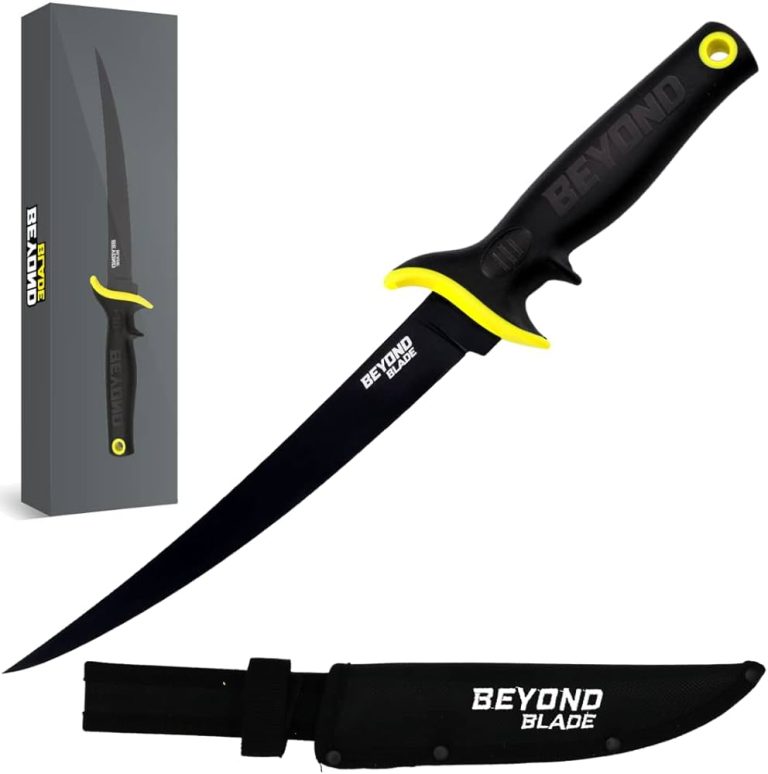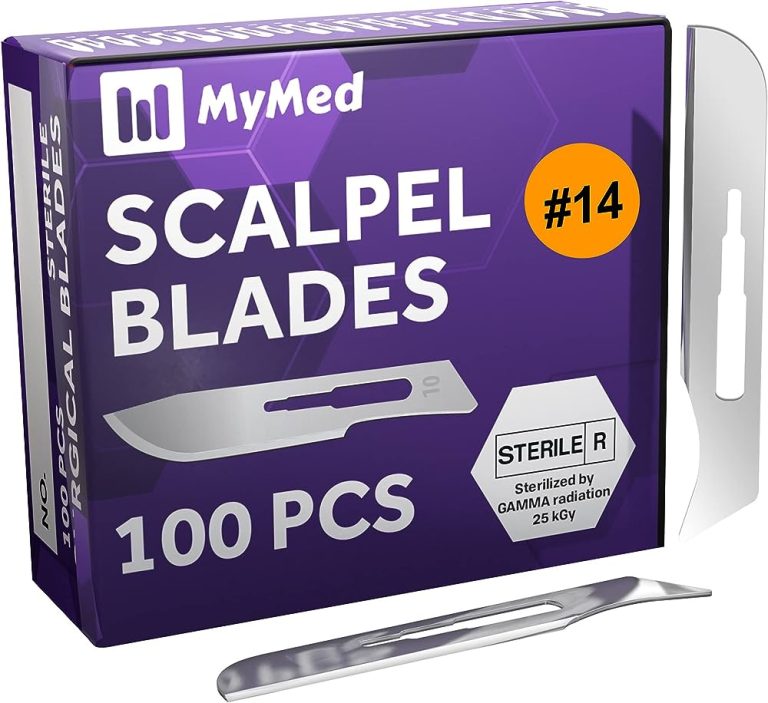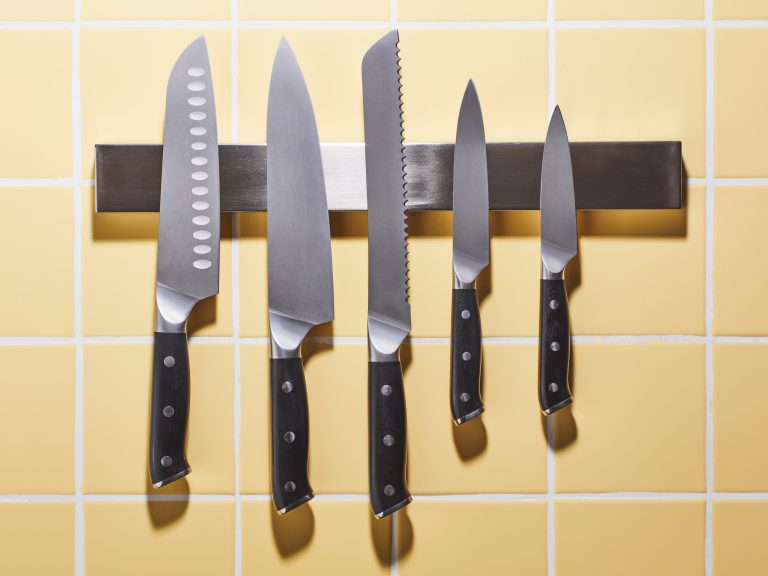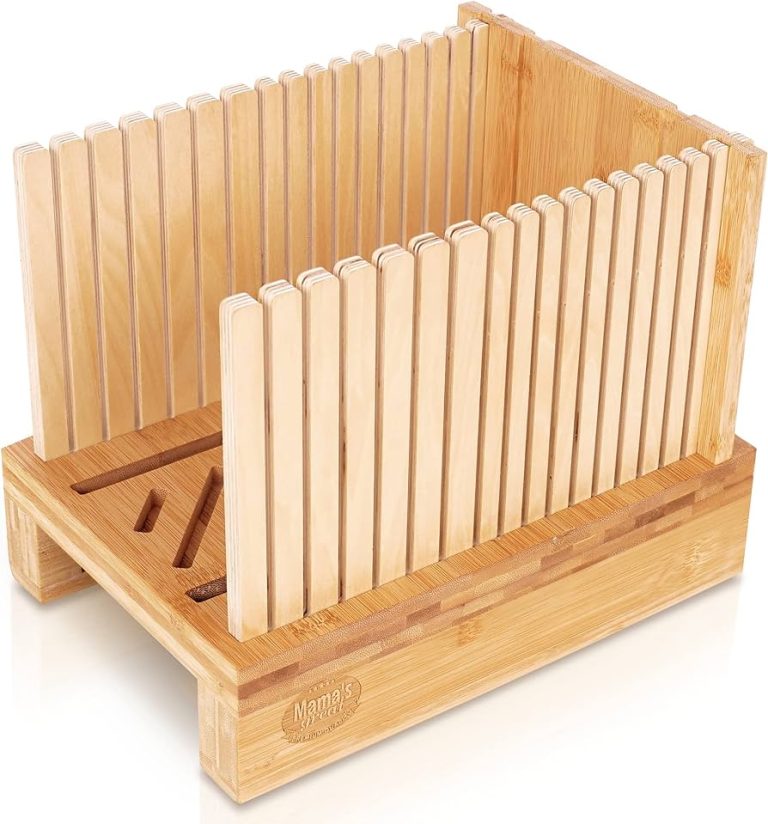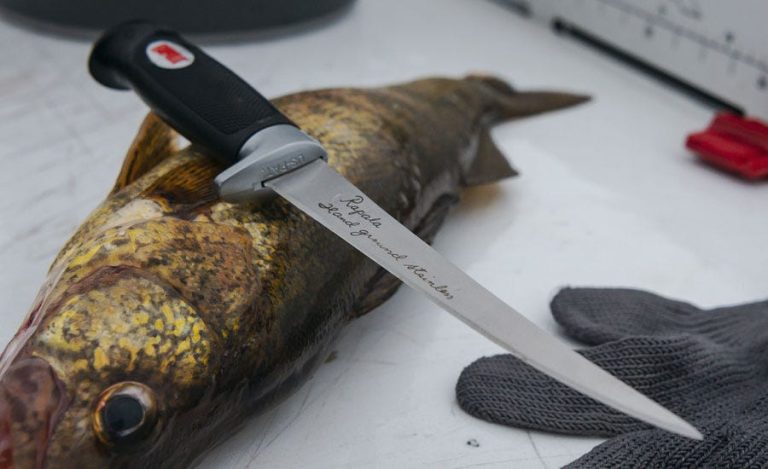Sterilization And Maintenance of Doctors Knives
Doctors knives should be sterilized and maintained regularly to prevent the spread of infections. We will discuss the importance of sterilization and maintenance for doctors knives, highlighting the steps involved and the best practices to ensure their longevity and effectiveness in medical procedures.
We will also provide insights into the various sterilization methods available, the frequency of maintenance required, and tips for proper storage. Effective sterilization and maintenance of doctors knives play a crucial role in promoting patient safety and maintaining the quality of healthcare services.
By following the correct procedures, healthcare professionals can minimize the risks associated with contaminated instruments and provide optimal care to their patients.
Importance Of Proper Sterilization Techniques
Proper sterilization techniques are crucial for maintaining the cleanliness and safety of doctors’ knives. By following strict sterilization protocols, the risk of infections and cross-contamination can be significantly reduced, ensuring the well-being of both patients and medical professionals.
Types Of Contaminants On Doctors’ Knives
- Blood and bodily fluids: During surgeries or medical procedures, doctors’ knives can become contaminated with blood and other bodily fluids, which may carry infectious pathogens.
- Microorganisms: Knives can harbor a variety of microorganisms, including bacteria, viruses, and fungi, which can cause infections if not properly sterilized.
- Residues and organic matter: Doctors’ knives can accumulate residues and organic matter, such as tissue debris, which can promote the growth and survival of microorganisms.
Risks Associated With Contaminated Knives
- Infection transmission: Contaminated knives pose a significant risk of transmitting infections from patient to patient if not sterilized effectively. This can lead to a chain of infections within healthcare settings.
- Surgical site infections (SSIs): SSIs are one of the most common healthcare-associated infections, and contaminated knives can be a source of such infections. SSIs can result in prolonged hospital stays, increased morbidity, and even mortality.
- Compromised patient safety: The use of contaminated knives can compromise patient safety and undermine the effectiveness of medical treatments. Contamination can lead to additional complications and delays in recovery.
Importance Of Sterilization In Preventing Infections
- Preventing healthcare-associated infections (HAIs): Proper sterilization techniques for doctors’ knives are crucial in preventing HAIs. By eradicating microorganisms and reducing contamination, sterilization greatly minimizes the risk of infection transmission.
- Maintaining aseptic environments: Sterilization ensures that doctors’ knives remain free from contaminants, preserving the integrity of aseptic environments. This plays a vital role in preventing infections during surgeries and other medical procedures.
- Enhancing patient outcomes: Effective sterilization practices promote better patient outcomes by reducing the incidence of post-operative infections. This results in improved healing, shorter hospital stays, and increased patient satisfaction.
With the complexity of healthcare-associated infections and the risks associated with contaminated doctors’ knives, it is essential to prioritize proper sterilization techniques. By effectively eliminating contaminants, we can safeguard patient safety, prevent infections, and enhance overall healthcare outcomes.
Sterilization Methods For Doctors Knives
Doctors knives require proper sterilization and maintenance to ensure a safe and hygienic medical environment. There are various effective sterilization methods available that can help doctors keep their knives clean and infection-free, promoting patient well-being.
Among the essential practices in the medical field, sterilization of doctors’ knives is of utmost importance to prevent the spread of infections and ensure the safety of patients. Various sterilization methods are employed to effectively eliminate microorganisms from the surface of the knives.
In this section, we will explore three prominent sterilization methods used for doctors’ knives: autoclave sterilization, chemical sterilization, and ultraviolet sterilization.
Autoclave Sterilization:
- Autoclave sterilization is a widely used method that employs steam under high pressure to sterilize doctors’ knives.
- The knives are placed in a chamber within the autoclave and exposed to steam at a temperature of 121 degrees Celsius (250 degrees Fahrenheit) for a specific duration.
- The heat and pressure generated by the autoclave effectively destroy bacteria, viruses, fungi, and other microorganisms present on the knives.
- Autoclave sterilization ensures thorough and reliable sterilization, making it a preferred method in medical settings.
Chemical Sterilization:
- Chemical sterilization involves the use of chemical agents to disinfect and sterilize doctors’ knives.
- Various chemical solutions such as hydrogen peroxide, glutaraldehyde, and ortho-phthalaldehyde (OPA) can be used for this purpose.
- The knives are usually immersed in the chemical solution for a specified duration to ensure complete sterilization.
- Chemical sterilization is effective in killing a wide range of microorganisms and is commonly used for delicate surgical instruments that cannot withstand high temperatures.
Ultraviolet Sterilization:
- Ultraviolet (UV) sterilization is a non-thermal method that utilizes ultraviolet light to eliminate microorganisms on doctors’ knives.
- UV sterilization is typically achieved through the use of UV germicidal lamps or UV sterilization cabinets.
- The knives are exposed to UV light for a specific duration, during which the UV rays damage the DNA or RNA of the microorganisms, rendering them inactive.
- UV sterilization is a quick and efficient method, requiring no chemical agents or high temperatures. However, it is important to note that it is only effective on the exposed surfaces directly illuminated by UV light.
The sterilization of doctors’ knives is a critical aspect of maintaining cleanliness and preventing infections in medical settings. Autoclave sterilization, chemical sterilization, and ultraviolet sterilization are three effective methods employed to ensure the knives are thoroughly disinfected. Each method offers its own advantages and is suitable for different scenarios, allowing medical professionals to select the appropriate sterilization method based on their specific needs.
Recommended Steps For Knife Maintenance
Maintaining the sterility and functionality of doctors’ knives is crucial. Follow these recommended steps to ensure proper sterilization and maintenance for long-lasting use.
Proper cleaning techniques:
- After each use, carefully hand wash the knife with warm, soapy water to remove any food residue or stains.
- Make sure to dry the knife thoroughly with a clean towel to prevent rust or corrosion.
- Avoid using harsh detergents or abrasive materials that can damage the knife’s surface.
Regular sharpening and honing:
- Sharpen the knife regularly to maintain its cutting edge.
- Use a sharpening stone or honing rod to remove any dullness and restore sharpness.
- Hold the knife at a consistent angle and apply light pressure while sharpening.
- After sharpening, use a honing rod to align the blade and maintain its sharpness.
Maintenance of knife handles:
- Check the knife handle periodically for any cracks, loose screws, or signs of wear and tear.
- If the handle is made of wood, apply a food-safe oil or wax to keep it moisturized and protected.
- For handles made of synthetic materials, simply wipe them clean with a damp cloth.
- Ensure that the handle is securely attached to the blade and there are no loose parts.
Remember, maintaining your doctor’s knives is crucial for their longevity and performance. By following these recommended steps for knife maintenance, you can ensure that your knives remain sharp, clean, and safe to use throughout their lifespan. Happy cooking!
Common Mistakes To Avoid
Proper sterilization and maintenance of doctors’ knives is crucial to ensure patient safety and prevent infections. Avoiding common mistakes such as inadequate cleaning, improper storage, and failing to follow recommended guidelines can help healthcare professionals maintain a hygienic and safe environment.
Using improper cleaning agents:
- Using harsh chemical cleaners can damage the knives or leave behind toxic residue. Stick to mild, non-abrasive cleaners specifically designed for surgical instruments.
- Avoid using bleach or any chlorine-based cleaning agents, as they can corrode the metal blades.
- Always read the manufacturer’s instructions and follow the recommended cleaning products to ensure longevity and maintenance of the knives.
Neglecting regular maintenance:
- Regular maintenance is crucial to ensure the durability and performance of doctors’ knives.
- Ignoring regular maintenance can lead to reduced effectiveness and potential hazards during surgical procedures.
- Establish a consistent maintenance schedule that includes sharpening, lubricating, and checking for any signs of damage or wear.
- Regularly inspecting the knives will ensure early detection of any issues and prevent them from escalating.
Inadequate storage practices:
- Proper storage is essential to maintain the condition of doctors’ knives.
- Avoid leaving knives in damp or humid environments, as this can lead to corrosion.
- Always clean and dry the knives thoroughly before storing them in a designated case or container.
- Using knife sheaths or individual compartments will prevent any accidental damage and maintain the sharpness of the blades.
Remember, using improper cleaning agents, neglecting regular maintenance, and inadequate storage practices can significantly impact the performance and lifespan of doctors’ knives. By avoiding these common mistakes, you can ensure your knives remain in optimal condition, ready for use in critical surgical procedures.
Best Practices For Sterilization And Maintenance
Proper sterilization and maintenance practices are crucial for ensuring the cleanliness and effectiveness of doctors’ knives. Following best practices can help to prevent infections and maintain the longevity of these essential tools.
Proper sterilization and maintenance of doctors’ knives are essential to ensure the safety and well-being of patients. By following the manufacturer’s guidelines, educating staff on proper sterilization techniques, and establishing a maintenance schedule, healthcare providers can uphold the highest standards of hygiene.
This article will delve into each of these best practices to help medical professionals maintain a sterile and efficient environment.
Following Manufacturer’S Guidelines
To ensure the effective sterilization and maintenance of doctors’ knives, it is crucial to adhere to the manufacturer’s guidelines. These guidelines provide specific instructions on how to properly clean, disinfect, and sterilize the knives. By following these guidelines, healthcare providers can mitigate the risk of bacterial contamination and maintain the longevity of the equipment.
Key points to consider:
- Thoroughly read and understand the manufacturer’s instructions for sterilization and maintenance.
- Identify the recommended cleaning agents and techniques for effective sterilization.
- Use the specified sterilization equipment, such as autoclaves or ultrasonic cleaners, as stated by the manufacturer.
- Pay close attention to the recommended temperature, duration, and pressure settings for sterilization.
- Regularly review the manufacturer’s guidelines for any updates or changes.
Educating Staff On Proper Sterilization Techniques
Properly trained staff is instrumental in maintaining a safe and sterile environment. Staff should be educated on the best practices for sterilizing and maintaining doctors’ knives to ensure consistency and adherence to protocols. Here are some important points to consider:
- Conduct comprehensive training sessions on sterilization techniques, emphasizing the importance of following established protocols.
- Provide detailed instructions on the proper handling, cleaning, and sterilization of doctors’ knives.
- Educate staff members on the risks associated with inadequate sterilization, such as cross-contamination and infections.
- Ensure staff members are aware of the potential consequences of negligence in sterilization practices.
- Continuously reinforce the importance of proper sterilization techniques through periodic reminders and refresher courses.
Establishing A Maintenance Schedule
Regular maintenance plays a vital role in extending the life cycle of doctors’ knives and ensuring their optimal performance. By establishing a maintenance schedule, healthcare providers can proactively address any issues or signs of wear and tear. Consider the following:
- Develop a maintenance schedule that outlines specific tasks, intervals, and responsible personnel.
- Regularly inspect doctors’ knives for signs of damage or malfunction.
- Clean the knives thoroughly after each use to remove any residue or debris.
- Lubricate the moving parts to facilitate smooth operation.
- Keep a record of maintenance activities, including repairs, replacements, and inspections.
By following these best practices for sterilization and maintenance, healthcare providers can create a safer environment for both patients and medical staff. Adhering to the manufacturer’s guidelines, educating staff on proper sterilization techniques, and establishing a maintenance schedule are essential steps in upholding the highest standards of hygiene in medical settings.
Ensuring Compliance With Regulations
Ensure compliance with regulations by implementing strict sterilization and maintenance protocols for doctors’ knives. This ensures the safety and well-being of patients while also meeting regulatory standards.
Sterilization And Maintenance Of Doctors Knives
A crucial aspect of maintaining a safe healthcare environment involves complying with stringent regulations for sterilizing and maintaining doctors’ knives. Health authorities across the globe establish guidelines, impose documentation and record-keeping requirements, and conduct periodic inspections and audits to ensure adherence to these regulations.
Let’s delve into the details of ensuring compliance with the regulations.
Guidelines From Regulatory Authorities:
- Regulatory authorities provide explicit guidelines that healthcare facilities must follow to ensure effective sterilization and maintenance of doctors’ knives. These guidelines encompass various aspects, including the proper cleaning, disinfection, and sterilization techniques. Key points to consider include:
- Using appropriate cleaning solutions and detergents to clean knives thoroughly before sterilization. This ensures the removal of any organic matter or debris that may hamper the sterilization process.
- Applying the appropriate sterilization method based on the knife’s material and intended use. Common sterilization methods include autoclaving, chemical sterilization, and dry heat sterilization. Each method comes with specific requirements and parameters that must be met for successful sterilization.
- Maintaining accurate sterilization records, documenting dates, sterilization methods utilized, and any quality control measures performed. These records serve as proof of compliance during regulatory inspections.
Documentation And Record-Keeping Requirements:
- To ensure compliance with regulations, healthcare facilities must maintain meticulous documentation and record-keeping practices. These practices involve:
- Developing a robust system for documenting sterilization and maintenance procedures performed on doctors’ knives. This includes recording details such as the date of sterilization, the person responsible, and the sterilization method used.
- Keeping track of the maintenance and repair history of each knife. This includes documenting any repairs, replacements, or modifications made to the knives to ensure their safe and effective use.
- Establishing a reliable system for tracking the expiration dates of sterilization supplies and equipment, such as sterilizing agents and filters. Regularly monitoring and replacing expired items is vital to maintain the effectiveness of the sterilization process.
Periodic Inspections And Audits:
- Periodic inspections and audits are critical components of ensuring ongoing compliance with regulations. These inspections and audits involve:
- Conducting routine inspections of sterilization areas to assess compliance with guidelines, proper storage of knives, and cleanliness of the environment.
- Performing regular audits of documentation and record-keeping practices to identify any deficiencies and ensure accurate and up-to-date records are maintained.
- Implementing corrective actions when non-compliance issues are identified during inspections and audits. This may involve additional staff training, process improvements, or equipment upgrades.
Healthcare facilities must prioritize complying with regulations to ensure effective sterilization and maintenance of doctors’ knives. By adhering to guidelines from regulatory authorities, maintaining thorough documentation and record-keeping practices, and conducting periodic inspections and audits, healthcare professionals can maintain a safe and sterile environment for both patients and healthcare providers.
Training And Education For Sterilization And Maintenance
Learn the essential techniques for sterilization and maintenance of doctors knives through specialized training and education programs. Enhance your skills in keeping these vital medical tools clean and functional for optimal patient care.
Importance Of Training For Healthcare Professionals
- Proper training and education are vital for healthcare professionals involved in the sterilization and maintenance of doctors’ knives.
- Training ensures that they possess the necessary knowledge and skills to handle the sterilization process effectively and maintain the knives in a safe and functional condition.
- Having trained professionals contributes to the overall safety and quality of patient care.
Continuing Education Opportunities
- Staying updated with the latest advancements and best practices in sterilization and maintenance is crucial for healthcare professionals.
- Continuous learning through workshops, seminars, and online courses helps professionals stay informed about new techniques and technologies.
- It also allows them to enhance their skills, integrate new knowledge into their work, and ensure high standards of sterilization and knife maintenance.
Resources For Staying Updated On Best Practices
- Various resources serve as valuable references to healthcare professionals involved in sterilization and maintenance.
- Professional associations and organizations dedicated to healthcare provide guidelines, protocols, and educational materials.
- Online platforms, academic journals, and research papers offer insights into advancements and best practices.
- Collaboration with colleagues, attending conferences, and participating in webinars can also facilitate knowledge sharing and staying updated.
Remember that proper training and education are essential for healthcare professionals engaged in sterilization and maintenance processes. Continuous learning opportunities, such as workshops and courses, should be embraced to ensure up-to-date knowledge. Additionally, resources like professional associations, research papers, and collaboration with colleagues are valuable in staying informed about best practices.
By prioritizing training and education, healthcare professionals can maintain the highest standards in sterilization and knife maintenance, ultimately benefiting patient care.

Credit: www.nytimes.com
Frequently Asked Questions Of Sterilization And Maintenance Of Doctors Knives
How Do Doctors Sterilize Equipment?
Doctors sterilize equipment using a variety of methods such as autoclaving, chemical disinfection, and high-level disinfection.
What Medical Equipment Needs Sterilization?
Medical equipment that needs sterilization includes surgical instruments, endoscopes, dental tools, and other reusable devices.
How Do You Clean Sterilization And Maintenance Of Surgical Instruments?
To clean and sterilize surgical instruments, follow these steps:1. Begin by pre-cleaning the instruments immediately after use. 2. Then, ensure thorough rinsing to remove any visible debris or blood. 3. Next, use an appropriate detergent solution for washing the instruments.
4. After washing, inspect the instruments for any damage or malfunction. 5. Finally, sterilize the instruments using an approved method such as autoclaving or chemical sterilization.
How Long To Sterilize Medical Equipment?
Sterilizing medical equipment typically takes around 30 minutes to an hour.
Conclusion
To ensure the safety and well-being of both patients and doctors, proper sterilization and maintenance of doctors’ knives is absolutely essential. By following strict sterilization protocols, such as using autoclaves or chemical disinfectants, healthcare facilities can effectively eliminate harmful bacteria and prevent the spread of infections.
Additionally, regular maintenance of knives, including sharpening and checking for any damages, is crucial to guarantee their optimal performance during surgical procedures. Implementing these practices not only ensures the longevity of the knives but also enhances precision, efficiency, and overall patient care.
By prioritizing the sterilization and maintenance of doctors’ knives, medical professionals can confidently carry out their duties, knowing that they are equipped with clean, sharp, and reliable instruments. Ultimately, this commitment to instrument hygiene upholds the highest standard of care and promotes a safer healthcare environment for everyone involved.

